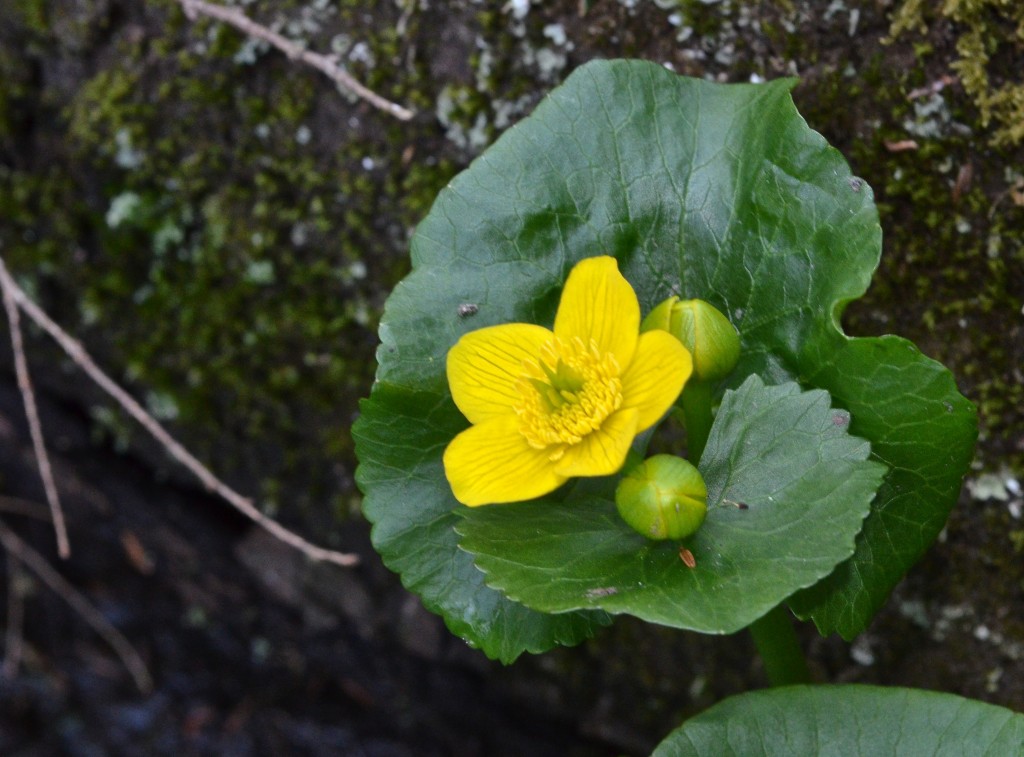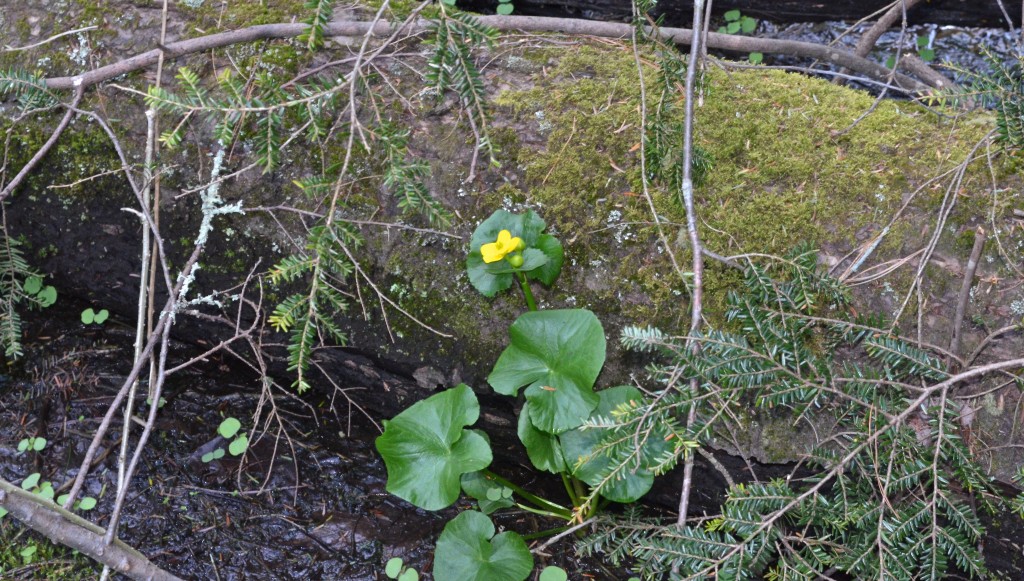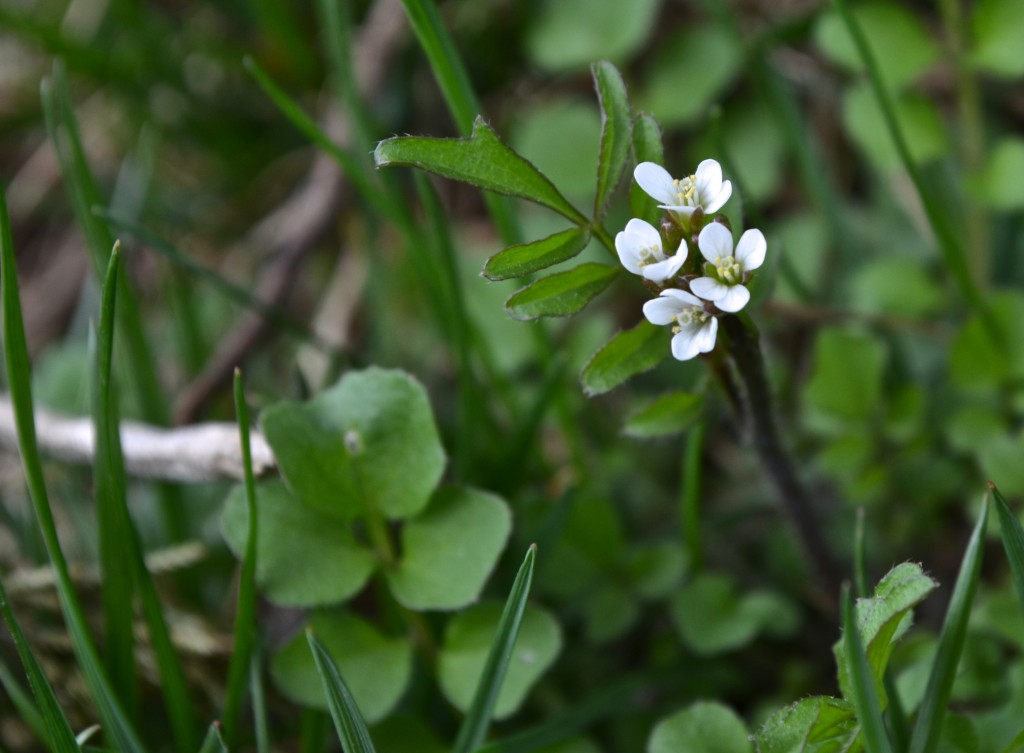
 I’ve seen this two places this year, both times with its feet in the water. The foliage is bad-tasting and toxic, and thus avoided by mammalian herbivores. (I just like to say mammalian herbivores.)
I’ve seen this two places this year, both times with its feet in the water. The foliage is bad-tasting and toxic, and thus avoided by mammalian herbivores. (I just like to say mammalian herbivores.)
Marsh Marigold (Caltha palustris)

There are stone steps leading from our driveway up to the yard, and one day, a turtle was positioned vertically against the bottom step, with one arm mightily extended onto the top of the step, ready to hoist itself up. I went in to get a camera, had to answer the phone, and by the time I got back, she had gone to plan B. (This is how slow I need wildlife to move for me to be able to take their picture.) Anyway, I think this is a red-eared slider, which is the kind of turtle that people have as little pets, and so many have been released, they are an invasive species in the Northeast. They have green skin and yellow stripes, and a red stripe on each side of the head. They are omnivores, and must be submerged to eat. This one was about 10″ in diameter and was coming from the pond, and still had pond vegetation on its shell. Where was it going?
Red-eared Slider (Pseudemys elegans)
The violets parade has begun! These were the first I saw, a drift of white violets on the edge of the woods. There are a lot of violet varieties … it appears that this is Common Blue Violet which is a variable species that can occur as white or as in this case, white smudged with lavender. They are native.
Common Blue Violet (Viola sororia)
Very small, but with an exotic orchid-like form if you look closely. Called deadnettle because even though it looks like a nettle, it is not, and it doesn’t sting like a nettle. Apparently the flowers, leaves and stems are edible, raw, cooked or dried. Mint family. Native to Europe and Asia.
Purple Deadnettle, Red Deadnettle, Purple Archangel (Lamium purpureum)
 One of the tiny first flowers to appear in spring. With one of the best names. An edible bitter herb native to Europe and Asia; in North America it’s considered an invasive weed. “Habitats with a history of disturbance are preferred.” (Well put, Illinoiswildflowers.com!) Mustard family.
One of the tiny first flowers to appear in spring. With one of the best names. An edible bitter herb native to Europe and Asia; in North America it’s considered an invasive weed. “Habitats with a history of disturbance are preferred.” (Well put, Illinoiswildflowers.com!) Mustard family.
Hairy Bittercress, Hoary Bittercress (Cardamine hirsuta)